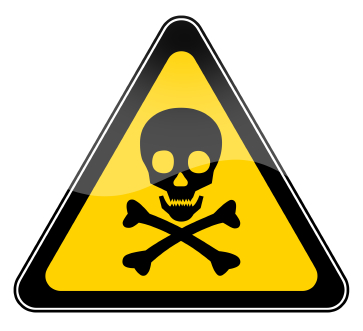Author: Ashley Grigsby, DO, Indiana University
Noncardiogenic pulmonary edema (NCPE) is a clinical entity consisting of alveolar fluid accumulation without evidence of cardiac cause.[1] Although there are many non-toxicologic causes of NCPE, both opiate overdose and salicylate toxicity are known to cause NCPE and should be part of one’s differential diagnoses.
Opiate overdose induced NCPE was first recognized by William Osler in 1880.[2] It can occur with any opioid, including heroin and methadone. Although the pathophysiology of this phenomenon is not yet completely understood, it is believed that both direct drug toxicity and hypoxia induced alveolar permeability play a role in the development of pulmonary edema.[1,2] New users and males are more at risk to develop NCPE than other opiate users. Symptoms become clinically apparent within 24 hours of use, but usually manifest within four hours.[2,3] Treatment for NCPE in these patients is mostly supportive. In one case series, approximately 33% of patients required mechanical ventilation; fortunately, most are able to be extubated within 24 hours as the effects are short lasting.[1] Naloxone may be beneficial in these patients to reverse the opioid toxicity. Patients who present with respiratory failure from opiate overdose should be observed for development of pulmonary edema, even if reversed with naloxone.[2]
In addition, NCPE is a well-recognized manifestation of acute and chronic salicylate toxicity, occurring in 35% of cases.[4] Several theories on the mechanism behind this toxicity exist. It is believed that salicylates directly act on the central nervous system and cause a massive catecholamine surge that shifts blood to the pulmonary circulation.[4] Young patients with pulmonary edema should have a serum salicylate level to rule out toxic levels. Furthermore, patients presenting with pulmonary edema in the presence of a mixed respiratory alkalosis and anion-gap metabolic acidosis should have you consider salicylate toxicity as a potential cause.[4] There are reported cases of normal gap acidosis in the setting of severe toxicity and a salicylate level would be reasonable in these patients as well.[4] Treatment consists of supportive respiratory care and serum alkalization with intravenous sodium bicarbonate.[5] Additionally, salicylate induced pulmonary edema is an absolute indication for hemodialysis.[1] Because of the high morbidity and mortality associated with salicylate toxicity, it is important to consider it in your differential diagnoses.
NCPE as a clinical entity has many causes, but opiate and salicylate toxicity should be considered to prevent delay in diagnosis. It is especially important to consider it due to the lack of other clinical symptoms. If salicylate toxicity is confirmed, treatment with sodium bicarbonate and hemodialysis should occur promptly.
References:
- Givertz M. Noncardiogenic Pulmonary Edema. Up to Date. 2014. Accessed on 12 July 2014. Available from: http://www.uptodate.com/contents/noncardiogenic-pulmonary-edema?source=search_result&search=ncpe&selectedTitle=1~73
- Sterrett C, Brownfield J, Korn CS, Hollinger M, Henderson SO. Patterns of presentation in heroin overdose resulting in pulmonary edema. The American Journal of Emergency Medicine. 2003. 21(1), 32-4.
- Sporer K, Dorn E. Heroin-Related Noncardiogenic Pulmonary Edema. Chest [serial online]. November 2001;120(5):1628. Available from: Academic Search Premier, Ipswich, MA. Accessed July 12, 2014.
- Yuklyaeva N, Chaudhary A, Gorantla R, Bischof E. Salicylate-induced pulmonary edema – a near miss diagnosis. The American Journal of Emergency Medicine. 2004. 32(5), 490.
- Glisson JK, Vesa TS, Bowling MR. Current management of salicylate-induced pulmonary edema. Southern Medical Journal. 2011.104(3); 225-32.

